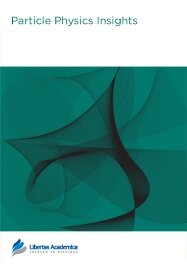

Publication Date: 25 Oct 2011
Type: Hypothesis
Journal: Particle Physics Insights
Citation: Particle Physics Insights 2011:4 25-31
doi: 10.4137/PPI.S8241

Planck time (tP) is derived from subatomic physical constants: frequency equivalents of the neutron, the electron, the Bohr radius, and the ionization energy of hydrogen. tP squared represents a proportionality constant where the product with the frequency equivalents of two masses and the frequency equivalent distance equals the gravitational energy in Hz. This method is based on the harmonic neutron hypothesis explained herein: the fundamental constants represent a unified exponential consecutive integer (forces) or integer quantum fraction (1 ± 1/n) (particles, bosons, distances) system where the annihilation frequency of the neutron (vns) is the base. All of the fundamental constants are associated with simple linear relationships of their components when plotted on a ln ln plane using the slopes and intercepts of two ln ln plotted lines associated with hydrogen, weak kinetic, wk, and electromagnetic, em. The degenerate, approximate value of tP2 can be derived utilizing the quantum fraction values for the proton, 1, gravitational binding energy of electron, -1, the electron, 6/7, and the Bohr radius, 4/5. The approximate degenerate value yielded of tP is the square root of vn raised to the exponent -1-1-6/7-4/5 divided by 4p is 5.51548 × 10-44 s, and the known value is 5.39124 × 10-44 s. The predicted degenerate value of Newton's gravitation constant G is 6.9854466 × 10-11 m3 kg-1 s-2, whereas its known value is 6.67428 × 10-11 m3 kg-1 s-2. Using the hydrogen line values a more precise prediction can be made beyond what can be measured. Two points define the tP2 line, (0, -bwk -bem) and (-1, -awk). The intercept of this line at the sum of the quantum fractions (-128/35 -1) representing tP2 is used to derive tP. The hydrogen line derived tP value is 5.391141 × 10-44 s. The hydrogen line derived G value is 6.6740402 × 10-11 m3 kg-1 s-2. These derived values are within the known uncertainties. This method bridges from subatomic properties of hydrogen to gravity unifying these two systems and multiple forces.
PDF (604.16 KB PDF FORMAT)
RIS citation (ENDNOTE, REFERENCE MANAGER, PROCITE, REFWORKS)
BibTex citation (BIBDESK, LATEX)


The submission, review and publication of my manuscript was speedy and fair. Appropriate suggestions were made and incorporated which enhanced the quality of the paper.
Facebook Google+ Twitter
Pinterest Tumblr YouTube